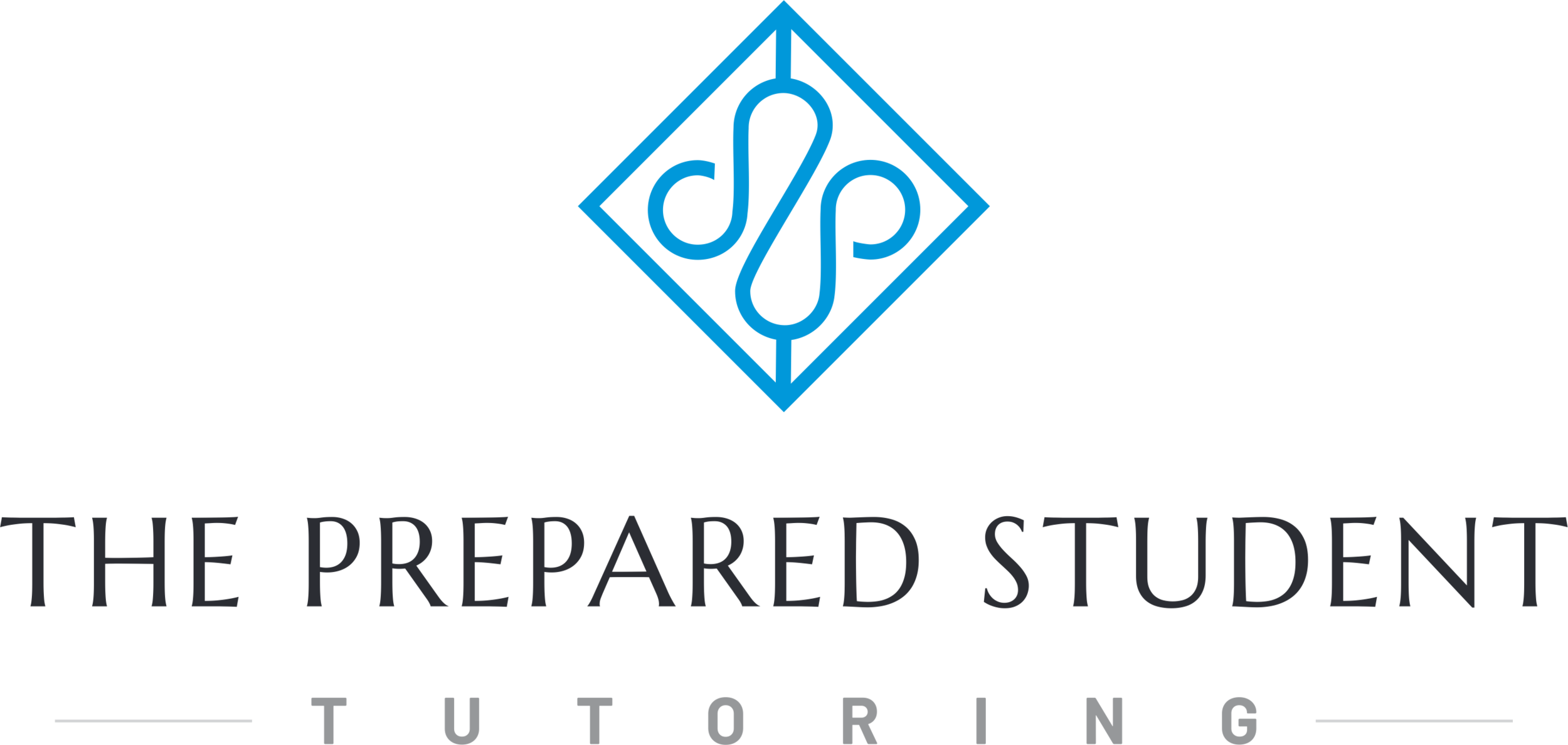ACT Reading Prep: Why it's Important to Have a Strategy
The ACT reading section consists of four stories, each accompanied by 10 questions. Students have just 35 minutes to work through this section, dissecting stories from various categories like natural science and literary prose. Students generally are not used to being examined on how quickly they can read and comprehend stories, and for that reason this section of the test can be quite difficult and stressful. Students need to identify a specific strategy that works well for them to assist them in getting through as much of this section as possible.
At first glance, it would seem that the reading section of the ACT should be pretty easy. It’s straightforward and shouldn’t be too difficult: students read stories and answer questions about them. How hard can that be? Well…it gets pretty hard when you’re forced to hurry your brain along at a pace that isn’t usually natural.
In fact, the main way that the ACT reading section is made more difficult is with a tight time constraint. Students have only 35 minutes to work through 4 full stories and answer 10 questions for each story — that breaks down to just 8 minutes and 30 seconds per story. Very few students will be able to read through and understand the stories in full AND answer all 10 questions for each story in just 8.5 minutes. For that reason, students need to find an approach and a strategy that works well for them to get through as many of the questions in this section as possible in the 35 minutes allotted.
WHY IT’S IMPORTANT TO HAVE AN ACT READING STRATEGY:
You’re not used to being tested on how quickly you move, so your natural pace may not allow you to work through even close to all of the questions. Not having time to attempt all questions will affect your score negatively.
It’s really important to have an identified strategy that you’ve already proven works well for you for the ACT reading section. When deciding which strategies to try, consider a couple of things — reflect on your general experiences with reading: Do you struggle with comprehension or tend to remember everything you read? Do you enjoy reading or does reading feel like a chore? Do you tend to read quickly or do you like to take your time and absorb information slowly?
Based on your answers to the questions above you will have a pretty good idea of what your ACT reading performance would probably be like without a strategy in place. Students who struggle with comprehension or prefer to read slowly should focus on strategies that don’t include reading the whole story. Students who read more quickly and can recall content easily can lean toward those strategies more focused on reading. Whatever the case, make sure to test out any strategy before attempting to use it on test day. Every student is unique, and what works well for your best friend is not necessarily going to work well for you.
Last but not least, practice, practice, PRACTICE! The reading section is no exception — the more you practice this section the more familiar you’ll be to the types of stories that show up, the language the ACT uses on the questions, and, perhaps most importantly, the strategy you’ll use on test day to assist you in defeating that pesky time constraint.
Hint: Most students will find success in working in an order of Easy to Hard across any given section on the ACT. The reason for this has to do with anxiety levels being lowest early on in the exam. While your anxiety levels are lower, you want to be focusing on what is easier for you and the questions that you are most likely to answer correctly. As time goes on, your anxiety levels will increase. When your anxiety levels are higher, you want to be working on the questions that are harder for you, since your overall probability of answering correctly goes down just based on what your hormones are doing!
ACT Reading Strategies to Consider Using on Test Day…
1. Change the order of the stories
There’s no rule that says you have to work through the reading stories in the order that they’re presented to you; you can reorder the stories however you would like. This can actually be very strategic. You may never have noticed, but every ACT test contains four different types of stories, and the order of these types never changes. What do we mean? The first story is always Prose Fiction, the second always Social Science, the third always Humanities, and the fourth always Natural Science.
2. Change the order of the questions
On the same note as #1, there’s also no rule stating that you have to work through the questions in the order they’re given to you. In fact, most students SHOULD NOT do this. The ACT knows that there are only so many ways that they can make this section of the test harder for you – I mean, the answers are pretty much all there in the stories somewhere. Therefore, they have to find sneaky ways of making the section more challenging. One of the ways they do this is by beginning with broad questions that ask about the whole story. A common first question that you will see following a reading story is something along the lines of “The main purpose of the passage is to:”… followed by four answer options. You may have just read the entire story and, therefore, be pretty well equipped for answering said question. However, if you save this question and answer it LAST you will have a higher probability of getting it correct. In contrast, you have a higher probability of answering any of the more specific questions correctly at the beginning of the question set than you do the broader questions. Save any questions that ask about the mood of the story and the narrator’s point of view for later in the question set; begin with the questions that point you to a detail in a specific line in the story or a certain vocabulary word, and then work your way out to the broader questions.
3. Have a plan to divide your time
If you disperse the 35 minutes you’re given on the reading section between all four stories, you’ll be sitting at 8.5 minutes to attack each story and its questions. For some students, this is enough time to work through each story, but for many students this is a tight time constraint, and they receive better results when they can take more time working through some of the stories. For this reason, a really common strategy that many of our students use is the 10/10/10/5 strategy. This refers to the minutes spent on each story. So you will spend 10 minutes on three of the four stories and then rush through the fourth story with the last five minutes. What this does is give you just a little more time to work more in-depth on three of the stories. Sure, you’ll be rushing through a story at the end, but for many students the score is higher when they can work through three stories carefully than when they frantically rush through all four stories.
4. Save the story with two mini stories for the end
In recent years, the ACT has begun to include a new type of passage within the ACT reading section. One of the four stories will actually be two shorter stories. They will then ask you a handful of questions about each of the stories separately, followed by a few questions that ask you to compare and contrast the two short stories. This section has been known to show up in any of the four story categories. Therefore, while you don’t know what type of story it will show up as, you know it will show up somewhere and need to have a plan for attacking it.
5. Don’t Read
You’ve probably heard someone who received a good score on the ACT tell you that the secret is not to read the stories. Well, there can be some truth to that. Students who excel at reading comprehension and breaking apart reading passages can get by without reading the story at all. They dissect the questions and answers (often putting them in a strategic order – refer back to point #2) and pick up enough information about the story as they go on to correctly answer the other questions. Now, don’t just assume this is going to work for you. Remember that every student is unique and that what works well for your friend may not be your key to success as well. Try diving into the questions of a story without reading it first. Chances are you will figure out pretty quickly whether or not this is something that you can do easily or if this is something that is going to stress you out.
6. Read the questions, then read the story
Students who excel at reading comprehension can read a story and then recall most of the story and its meaning without having to go review the content again. But not everyone comprehends at the same level. Additionally, focus can be all over the place on ACT day, and you may find yourself getting distracted while you try to read, often realizing you’re reading and not retaining anything. The goal of this strategy is to help both readers for whom comprehension does not come super easily and those who are prone to becoming distracted while reading. With this strategy, you will read the questions first (but not the answer options!) and then go and read the story. The idea is that, as you read, you will recognize when you get to a point in the story that a particular question refers to. When you get to this point, let yourself stop reading and go work through that question while that part of the story is fresh in your mind and you know right where to look. Hopefully this will keep you from having to waste too much precious time after reading the whole story going back to dig for answers that you don’t recall.
7. Read the first and last paragraphs only
The idea of this strategy is to begin by obtaining the big-picture idea of the story as a whole by reading the introduction paragraph and the conclusion paragraph only. By doing this, you are getting an understanding of the overall point of the story, though you are missing all of the specific details within the supporting paragraphs. Having an idea of the big-picture will then assist you in answering the questions, during which time you’ll fill in the gaps of the details of the story. This is another strategy aimed toward students who either read more slowly or who struggle with recalling what they’ve read. This strategy is similar to “Don’t Read” - #5 above, but it gives students an idea of what to expect from the story and the questions, rather than diving into the questions blindly.
Looking for more focused ACT reading guidance? Check out our 7-Part Complete ACT Reading Suite!

